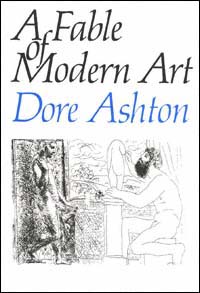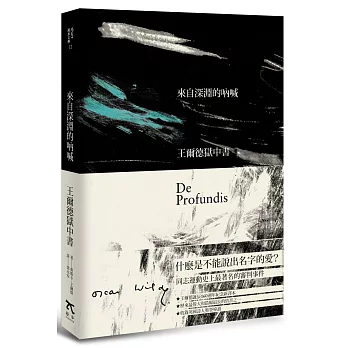(Shared by Vintage Books & Anchor Books)
Musicophilia:
Tales of Music and the Brain
"Oliver Sacks explores the place music occupies in the brain and how it affects the human condition. In Musicophilia, he shows us a variety of what he calls "musical misalignments." Among them: a man struck by lightning who suddenly desires to become a pianist at the age of forty-two; an entire group of children with Williams syndrome, who are hypermusical from birth; people with "amusia," to whom a symphony sounds like the clattering of pots and pans; and a man whose memory spans only seven seconds - for everything but music. Dr. Sacks describes how music can animate people with Parkinson's disease who cannot otherwise move, give words to stroke patients who cannot otherwise speak, and calm and organize people who are deeply disoriented by Alzheimer's or schizophrenia." - Back cover
此書中文版2008年: 腦袋裝了2000齣歌劇的人

'Hallucinations'
By OLIVER SACKS
Reviewed by SIRI HUSTVEDT
Oliver Sacks explores the power of hallucinations through first-person accounts.
The Mind's Eye by Oliver Sacks – reviews
'The Mind's Eye'
By OLIVER SACKS
紐約時報The Resilient Brain

Chris McGrath/Getty Images
Oliver Sacks in 2009.
By ANNIE MURPHY PAUL
Published: November 11, 2010
Those whose familiarity with Oliver Sacks extends only to his vivid book titles — “The Island of the Colorblind,” “An Anthropologist on Mars,” “The Man Who Mistook His Wife for a Hat” — may picture his writing as a gallery of grotesques, a parade of the exotically impaired. Sacks, a practicing neurologist, does specialize in case studies of highly unusual patients. But even as he entertains and diverts with his dramatic tales, Sacks has always been up to something else: he is gently educating us about the frailties and flaws — and the strengths and capacities — of “normal” people, those whose afflictions are of the most ordinary sort. You may never have confused your spouse for an item of outerwear, but have you ever failed to recognize the face of an acquaintance? Fumbled for a word that eluded your grasp? Read a sentence three times and still didn’t get it?
THE MIND’S EYE
By Oliver Sacks
263 pp. Alfred A. Knopf. $26.95
Related
Excerpt: ‘The Mind’s Eye’ (November 14, 2010)
The sufferers who write to Sacks receive a deeply empathetic response. Of one correspondent, a woman who has lost the capacity to read (but, remarkably, retains the ability to write), Sacks notes that he responded to her by telephone. “I normally would have written back,” he tells us, but in this case calling “seemed to be the thing to do.” Over time this patient, afflicted with a degenerative brain condition called posterior cortical atrophy, loses her ability to recognize objects and people, though she retains a keen sense of color and shape. When Sacks meets her in person to see how she navigates her everyday life, he dresses head to toe in red so she can keep track of him in a crowd.
Given to such un-self-consciously generous gestures, Sacks would seem to be the ideal doctor: observant but accepting, thorough but tender, training his full attention on one patient at a time. For the patient’s benefit and for ours, he illuminates every uncanny detail, brings out every excruciating irony. The woman for whom Sacks dresses in red, for example, is a virtuoso pianist, and the first sign of her malady is a sudden inability to read music. She is joined in these pages by a novelist who wakes up one morning unable to read, and an intensely sociable woman who is suddenly struck dumb. But Sacks is not primarily interested in documenting pathology, or even curing disease, which in most cases is impossible. There are no miraculous “awakenings” here.
Rather, he is most engaged by the process of compensation, how people make up for what they have lost, wresting new possibilities from their newly imposed limits. There’s the blind man who develops super-sensitive hearing, the deaf woman who catches tiny shifts in facial expression — and that pianist, who loses her ability to read music but gains new richness in her thinking about music. “She felt that her musical memory, her musical imagery, had become stronger, more tenacious, but also more flexible, so that she could hold the most complex music in her mind, then rearrange it and replay it mentally, in a way that would have been impossible before,” Sacks writes.
Sometimes these compensations are biological, he explains. The brain, plastic even into adulthood, reshapes itself to fit a new reality. In people who become blind as adults, Sacks notes, the part of the brain that once processed visual information does not atrophy, but is reallocated for another use. “The visual cortex, deprived of visual input, is still good neural real estate, available and clamoring for a new function.”
At other times, compensation takes the form of an ingenious tool. The social butterfly rendered mute by a stroke uses a lexicon, a book full of words to which she can point. (The lexicon is devised for her by a speech pathologist who is herself, Sacks notes in passing, a quadriplegic.) The novelist employs a journal-like “memory book” to teach himself how to read again. Such tools can help forge a new whole from patients’ shattered identities. As the novelist puts it, “The memory book returned a piece of myself to me.”
Sacks is most attuned to the psychological and emotional adjustments patients make to their new status; he clearly admires how they have gone on “to develop other ways of doing things, capitalizing on their strengths, finding compensations and accommodations of every sort.” In her piano playing, Sacks writes, the woman who could no longer read “not only coped with disease, but transcended it.”
So rewarding are the compensations of Sacks’ patients, in fact, that we begin to feel as if the tragedies that befell them were not tragedies at all, but — as the self-help books say — opportunities for growth. Then we arrive at the book’s penultimate essay, about Sacks’ own ocular cancer. His story is told in journal entries, dated from December 2005 to December 2009, which take on a deepening urgency as we experience along with him one event after another: the strange symptoms, the grim diagnosis, the painful treatment, the halting, incomplete recovery. Sacks’ jaunty confidence and sanguine attitude disappear, replaced by a panicked and sometimes piteous voice that is new to the reader and (if I may be so ungenerous) quite unwelcome. On Dec. 25, 2005, he writes: “Everyone says ‘Merry Christmas!’ and I reply in kind, but this is the darkest Christmas I have ever known. The New York Times today has pictures and stories of various figures who have died in 2005. Will I be among those figures in 2006?”
I found myself longing for the return of the ideal doctor of earlier chapters, and then I saw. He was right there, teaching us one more lesson: that compensation is meager consolation, that loss is painful, no matter what replaces it. Even those of us who have never lost our sight or faced a cancer diagnosis know how profoundly unsettling change can be. A move to a new job or a new neighborhood may make us, for a time, full of complaint and self-pity. It is characteristic of Sacks’ generosity to his patients that he allows only himself to be seen in this light.
Yet Sacks does eventually rally, his playful spirit intact. He notices that the blind spot, or scotoma, in his tumor-stricken right eye resembles the shape of Australia, “complete with a little bulge in the southeast corner — I thought of this as its Tasmania.” He observes that if he keeps his gaze steady for a few moments, his brain will “fill in” his blind spot with imagery borrowed from the parts of the scene he can see. The ever resilient brain, he remarks, “does not just fill in color, it fills in patterns too, and I enjoyed experimenting with my own scotoma, testing its powers and limitations.” Sacks calls this activity “scotomizing.”
Irrepressible though he may be, Sacks will not let us forget the sober lesson of his experience. He ends the essay not with a cheering paean to human resilience, but with a bleak new turn of events. A hemorrhage has further clouded his vision, leaving him with a gaping “nowhere” in his right visual field. “Time will tell whether I am able to adapt to this new visual challenge,” he writes.
Perhaps Sacks will take comfort from his novel-writing patient, who with great effort taught himself to read again. “The problems never went away,” the novelist reports, “but I became cleverer at solving them.”
***
The Mind's Eye by Oliver Sacks – review
The great neurologist's study of sight comes alive when he steps into the clinical spotlight himself
- The Mind's Eye
- by Oliver Sacks
![]()
- Buy it from the Guardian bookshop
- 作者:奧立佛‧薩克斯/著
- 原文作者:Oliver Sacks
- 譯者:韓文正
- 出版社:時報出版
- 出版日期:2004年
- Not qualified in legal terms: a defendant who was incompetent to stand trial.
- Inadequate for or unsuited to a particular purpose or application.
- Devoid of those qualities requisite for effective conduct or action.
- 作者:奧立佛‧薩克斯
- 原文作者:Oliver Sacks
- 譯者:黃秀如
- 出版社:時報出版
- 出版日期:1999年04月26日

Does the formula still work? The Mind's Eye, his 11th book, takes vision and visual imagination as the overarching theme, mixing case stories, essays and memoir. The aim, as ever, is to "show us what is often concealed in health: the complex workings of the brain and its astounding ability to adapt and overcome disability". Sacks fans will get what they want: the comfortable prose, the well-crafted storytelling and the generosity of spirit that, by all accounts, is no literary concoction but part of the protoplasm of the man himself. Then there are the scientific and philosophical digressions. His thoughts on the visual dimensions of language alone could launch a fleet of PhDs.
So there's much to admire. But I confess there were times when my fingers were racing my eyes in a footnote-stumbling scramble to get through to the end of certain chapters. The case histories were the problem. I found some of them overstuffed, both with detail and moral sentiment. There's only so much compassion a man can take, only so much astonishment at human resilience. I began to yearn for a shift of register, for failure and despair, for a patient who disappoints or defeats Dr Sacks. But no, there is never anything, ultimately, but uplift.
It's a somewhat skewed selection of cases for a book dealing predominantly with the sense of sight. Two of the four have essentially the same disorder, "alexia sine agraphia", which means inability to read while retaining the ability to write. Devastatingly for Lilian (the renowned concert pianist Lilian Kallir), the condition also affects her ability to read music. Howard is no less disabled by the condition. He's a crime novelist. How will he ever write another detective story if he can't read his own plot notes? A third patient, Pat, suffered a stroke and lost the power of speech. She doesn't seem to have a perceptual disorder as such, and so sits slightly eccentric to the others. The fourth case, "Stereo Sue", saw the world only in two dimensions until her 50s. The belated gift of depth perception is a joy beyond analysis. "Enough thinking!" she tells Sacks at one point.
Sacks is as strong as ever on the resourcefulness of embattled brains. He shows us Howard, for example, discovering the complementarity of vision and action when he realises that tracing the outlines of words with his tongue has the remarkable effect of improving his reading comprehension. "Thus, by an extraordinary, metamodal, sensory-motor alchemy... he was, in effect, reading with his tongue." And so he goes on to write another novel. This is inspirational stuff, but relentless positivity can be wearying. We leave Lilian at her piano. She's playing Haydn "with consummate artistry", having overcome an earlier bout of anxiety and confusion. The conclusion of the piece is a moment of triumph. "All is forgiven," she says. We are not told that she will be dead within a couple of years. We know nothing of the distress and indignities she might have gone on to bear as the disease crept inexorably through her brain. Bleak suffering, hopelessness and death are also part of the neurological landscape and I sometimes wish Sacks would stare harder into the shadows.
The Mind's Eye would have been a disappointment had it looked no further for clinical material. But there's a redeeming fifth case: Oliver Sacks. And when the author steps into the clinical spotlight the book comes to life. His well-documented absent-mindedness, "what is variously called my 'shyness', my 'reclusiveness', my 'social ineptitude', my 'eccentricity', even my 'Asperger's syndrome'", can, he thinks, be put down to lifelong face blindness. A rare consequence of brain injury, it is now understood to be quite common in the general population, varying in severity from habitual misrecognition of acquaintances to not recognising one's own children. Sacks's problem seems to fit at the more severe end of the spectrum, among those who are discombobulated even by their own reflection. On one occasion, he finds himself grooming his beard in a restaurant window only to realise that "what I had taken to be my reflection... was in fact a grey-bearded man on the other side of the window, who must have been wondering why I was preening myself in front of him".
The face blindness essay is engaging, informative and tonally consistent with the rest of the book. But the pace accelerates and the mood shifts in the penultimate chapter when Sacks is diagnosed with eye cancer. "Let's look at the worst-case scenario," says his ophthalmologist, but Oliver isn't listening: "a voice had started up in my head, shouting, 'CANCER, CANCER, CANCER...'" So, no more the dispassionate clinician looking in, anthropologically, on someone else's disease, hope invariably trumping despair. We now get to see him from the inside, and he turns out to be a restless worrybones, knocking himself out with sleeping pills to snuff out the spectres of mortality. His journal takes us, compellingly, through diagnosis and treatment to an almost total loss of vision in his right eye, the effects of which are meticulously documented. People "disappear into thin air" as they enter the void of his right visual field, and it's no longer a metaphor, he says, but "as close as I can come to describing the experience of nothingness and nowhere". The cancer seems not only to have stirred fears of death but also, perhaps, given him a glimpse of it.
Paul Broks is a neuropsychologist and author of Into the Silent Land: Travels in Neuropsychology (Atlantic)
只要是寫作,就有文字要求。傳統科學寫作,不脫教科書包袱,
看見聲音:走入失聰的寂靜世界 Seeing Voices : A Journey Into the World of The Deaf
腦神經醫師Oliver Sacks以其專業背景,配合傑出的說故事技巧,創作了多部膾炙人口的佳作,例如《睡人》、《錯把太太當帽子的人》、《鎢絲舅舅》。讀者較不知道的是,他 對手語及耳聾的世界也深感興趣。在這本書中,他探索了聾人世界的種種面向--訪談聾人及其家庭,造訪啟聰學校,深究聾人的歷史。他寫道:「如今我必須以新 的、『種族的觀點』去看待他們,他們是擁有獨特的語言、感知與文化的人。」
事實上「動人」(moving)和「啟思」 (thought-provoking)正是薩克斯作品的特色。不論是在《錯把帽子當太太》、《色盲島》,薩克斯以設身處地的同理心,描繪出人類因自身的 缺陷而遭逢的處境,故能動人;以過人的好奇心與理解力,見常人所未見,故能「啟思」。
表面上,《看見聲音》是一本歐美社會對待聽障的近代史,兼及美國手語的沿革發展;但是,薩克斯的企圖不止於此,他還想藉著聽力的障礙,來探索人何以為人。
人,是語言的產物。當笛卡兒說「我思故我在」時,他以為凡是人都有思想能力,但是聽力「正常」的人卻忘了,人是用語言來思想。沒有了語言能力,這個人的內心世界是什麼模樣?沒有語言,人要如何思考,如何建立概念?
失聰,也就阻絕了人與語言接觸的機會,而在不同年齡的失聰,也正可對照出認知發展所側重的不同階段。薩克斯以高超的敘述技巧,往返於聽障與非聽障族群之間,交相對照,衝擊既有成見。
作者簡介
奧立佛‧薩克斯(Oliver Sacks) 在文藝復興時期,歐洲(特別是義大利)突然之間發了狂似的,出現了米開朗基羅、達文西這類通曉藝術、科學、文學的十項全能。於是,「文藝復興人」遂成了西 方文明的理想,而在每個時代,也總有少數秀異之士,能兼善數種藝事,奧立佛.薩克斯(Oliver Sacks)顯然是其中之一。
他是傑出 的神經科學家,也是深具魅力的作者,透過《錯把帽子當太太的人》、《睡人》、《色盲島》、《火星上的人類學家》等數十本書,薩克斯每每帶領讀者走入病態的 世界,但是那個病態在他的筆下,卻是充滿了奇異的光輝,引人好奇,意欲一探究竟。奧妙的是,讀者走入薩克斯所呈現的世界之後,並不覺得薩克斯是從「正常」 的眼光來看待「病態」。每一種病態,都是生命難以承受之重,但也是一種福佑。據說薩克斯長年為偏頭痛所苦,這或許時時提醒他,避免身為醫者的傲慢,以更細 膩、同情的眼光看待人類的不幸。而薩克斯也的確有煉金師般的本事,能化平凡為神奇。
譯者簡介
韓文正,資深出版人,現專事翻譯。譯作有《美國總統的七門課》(合譯)、《鏡頭下的情人》、《所謂英國人》、《人性拼圖I、II》、《蘇格蘭人如何發明現代世界》(以上由時報文化出版)、《決策時刻》(大塊文化)等。
此書將對失聰者的辱稱"incompetent"前後翻譯不一致
(ĭn-kŏm'pĭ-tənt)

adj.
An incompetent person.
incompetentlyin·com'pe·tent·lyadv.
Seeing Voices

色盲島
本書為《睡人》作者奧立佛.薩克斯的最新作品,分別描寫了他的兩段南太平洋島嶼之旅。在第一部〈色盲島〉中,薩克斯造訪的是遺傳性色盲盛行的平格拉普島和彭貝島;而在第二部〈蘇鐵島〉中,他則來到關島,觀察當地已有百年歷史的一種神祕的神經退化癱瘓病變。
作者以一貫飽含人文關懷的詩意筆觸,不只藉由島上民族的風土病,研究神經醫學的未知領域,也寫各島居民的悲喜哀樂,以及自己在陌生景物與異國風情刺激下 的深刻自剖,廣泛探索了植物的奧妙、島嶼的意義、疾病的起源、地質學時間的本質和人類的複雜性等主題;既蘊含社會醫學的探討精神,又洋溢著溫馨細膩的旅遊 文學風采,在科文讀物中特別顯得獨樹一幟。
深度推薦
《博客來導讀》還記得小時候的色盲檢驗嗎?看著繪上不同顏色的圓點狀數字卡判別是否為色盲,而同學中確定為色盲者則是微乎其微;但在南太平洋中,就有這麼一個島嶼,那裏的原住島民多半為先天性色盲,而且在他們單調的視覺下,還發展出另一套看待世界、辨別事物的方法。
本 書記錄了神經醫學專家奧立佛.薩克斯,為找出色盲島及色盲族群成因,和罹患有如巴金森式症的進行性神經病變族群,所進行南太平洋特殊風土 病(endemic)的研究探尋之旅。在平格拉普和彭培兩個島嶼的實地研究中,作者發現在外來人口移居下,雖然先天性色盲者的比例並不高,但兩個島的色盲 者的確有著相當密切的血緣關係;而且這兩地對色盲者的態度,也有著世界其它地區難得見到的寬容與關懷;而在關島及羅塔島兩地,作者也發現了當地人慣食蘇鐵 與進行性神經病變間的關係。深刻的風土人文記錄以及人道關懷精神,都為本書增添許多風采。
或許這樣的研究對當地的疾病並沒有立即實質的幫助,但這樣一個實地對風土疾病的研究態度,卻為地區性疾病研究立下相當好的範例。台灣和日本過去也曾有烏腳病和水俁病的案例,這樣的研究精神或許是我們應該好好效法學習的。
本 書記錄了神經醫學專家奧立佛.薩克斯,為找出色盲島及色盲族群成因,和罹患有如巴金森式症的進行性神經病變族群,所進行南太平洋特殊風土 病(endemic)的研究探尋之旅。在平格拉普和彭培兩個島嶼的實地研究中,作者發現在外來人口移居下,雖然先天性色盲者的比例並不高,但兩個島的色盲 者的確有著相當密切的血緣關係;而且這兩地對色盲者的態度,也有著世界其它地區難得見到的寬容與關懷;而在關島及羅塔島兩地,作者也發現了當地人慣食蘇鐵 與進行性神經病變間的關係。深刻的風土人文記錄以及人道關懷精神,都為本書增添許多風采。
或許這樣的研究對當地的疾病並沒有立即實質的幫助,但這樣一個實地對風土疾病的研究態度,卻為地區性疾病研究立下相當好的範例。台灣和日本過去也曾有烏腳病和水俁病的案例,這樣的研究精神或許是我們應該好好效法學習的。












































































 作 者:
作 者: 



